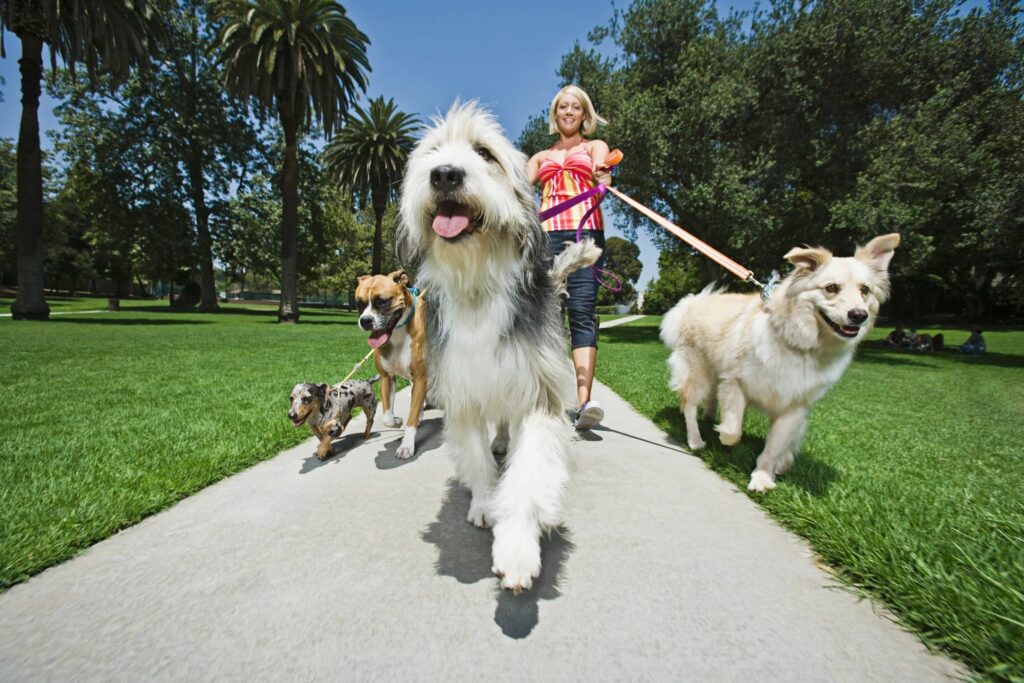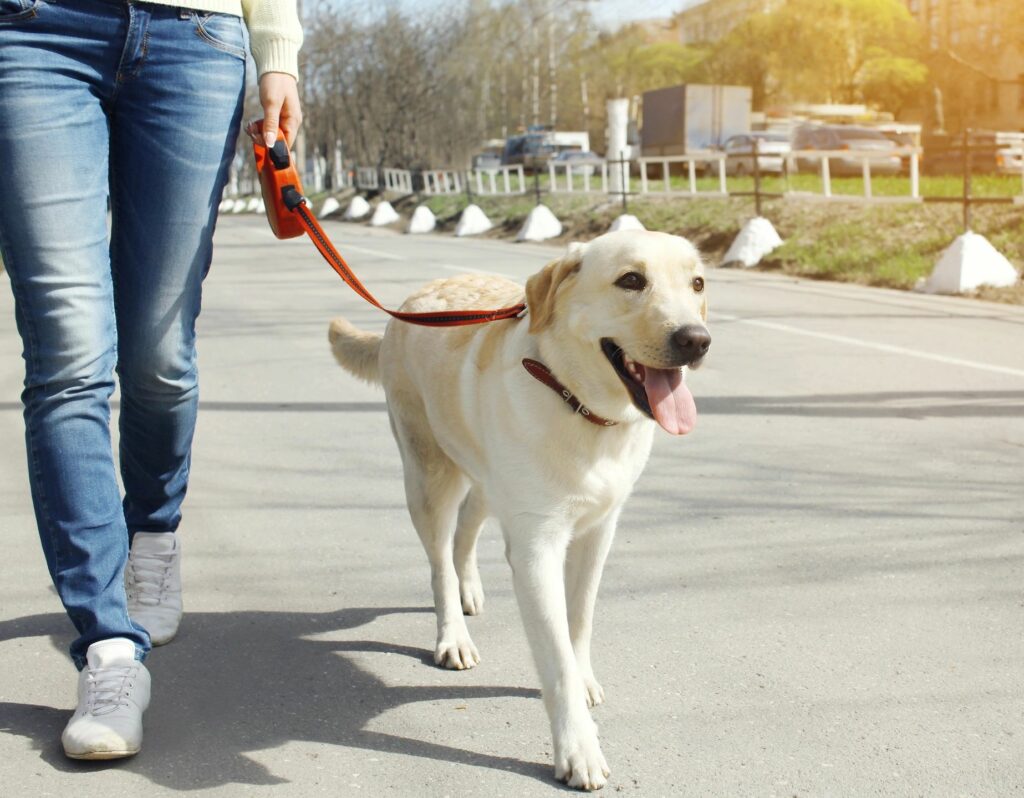Walking a dog is good for your dog and good for you. But it can be an unpleasant experience if your dog is the one taking you for a walk- pulling ahead and determining where you’ll go. If you find you fall into this habit with your dog, here’s how to train your dog to follow YOUR lead on a walk, which ends up being a much better experience for both of you.

First, let’s talk a bit about why many dogs walk ahead of their people. Bet you already know the answer…yep, those dogs think they are the leader. And the leader always leads, of course! So, it’s worth mentioning that preventing your dog from walking ahead of you can help establish you as the leader. If you find that you have trouble with your dog not listening to you, even if it is in another area altogether, such as not listening when you tell him to come, then practicing walking correctly will help with that, too.
So, how do you train your dog to walk nicely alongside you, with a nice, slack leash? There are two approaches we recommend.
Walk Your Dog With Corrections
One is to correct your dog when he gets ahead, and praise him when he does a good job of walking alongside you. While it’s best to get a trainer’s advice as to which type of collar or equipment is best for this, a Martingale collar usually works well for this purpose. Here’s the one we use for our own pup: Mighty Paw martingale collar. Of course, you’ll need to make sure you fit it properly and know how to make a correction with it. And you’ll need a regular, non-retractable leash.
When your dog gets ahead of you by about one body length (when his hindquarters are lined up with your hip), give a correction. This is done with a quick jerk and release on the leash. When your dog is back in line with you, even if that occurs because you’ve caught up with your dog, praise him to let him know that this is the correct place for him to walk.
Walk Your Dog Without Corrections
You can even train your dog to walk nicely without giving corrections. Essentially, this is training your dog to be more attentive by changing your direction. This is done without giving any correction at all. The goal with this training exercise is never to let your dog be in front of you. You’ll accomplish this by changing direction every time your dog gets ahead. Yes, your neighbors will wonder what you’re doing, but your dog will soon learn that he needs to pay attention to you to see where your going. This builds attentiveness in your dog, which is always helpful. And most importantly, he’ll learn that he isn’t the leader on walks.
Some Examples
So, for example, say you’re headed down a long straight sidewalk and your dog starts to get ahead. You can:
- turn 180 degrees and walk back the way you came for a bit,
- cross the street and continue in the same direction or the opposite direction,
- do a loop (or three) around a tree,
- walk off the sidewalk entirely, or any other direction you can come up with, figure 8’s, triangles,
- or whatever else you can think of
You can also intersperse having your dog sit, down, stay and come, or any other commands he knows, to reinforce that he needs to pay attention to you.
Then, when he’s alongside you, offer praise. A good sign that your dog is walking nicely along with you is a slack leash. If the leash is taut, he’s too far ahead. If the leash is hanging down in a curved J shape, your dog is where he should be.
One thing about this method is that you need to be willing to adjust your walk as needed. So even though you might have a destination in mind when you head out, in reality, you could end up walking for half an hour without actually going very far.
On the other hand, an added bonus of this training exercise is that walks will be more mentally stimulating for your pup. Which means that walking will help take the edge off of any extra energy your dog has, both mental and physical.
In Summary
So, to summarize, whether you decide to use a correction or change of direction, the key to training your dog to walk on a leash without pulling is this. Make sure your dog doesn’t get, or stay, ahead of you, and to offer praise to reinforce the correct position. Happy walking!

